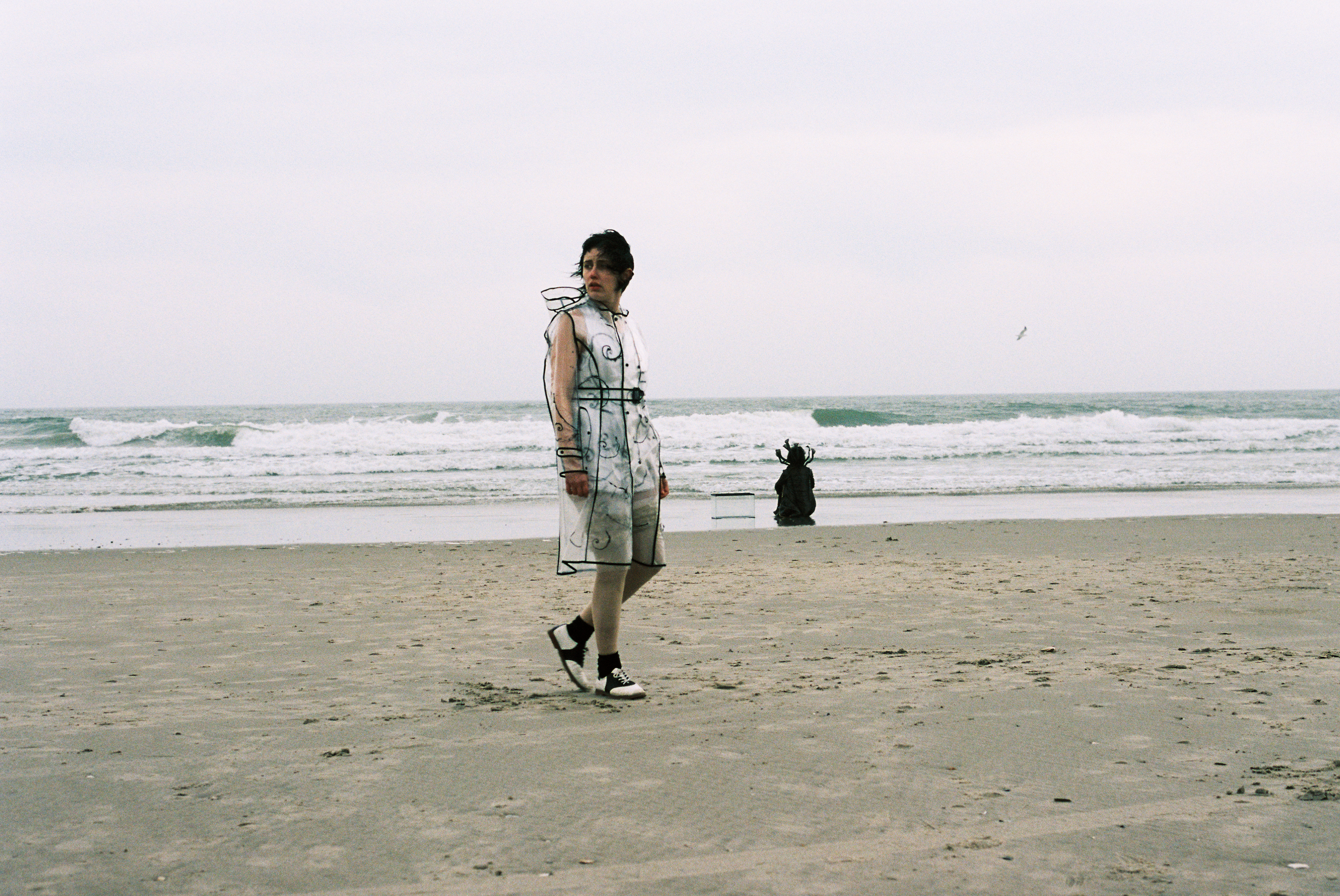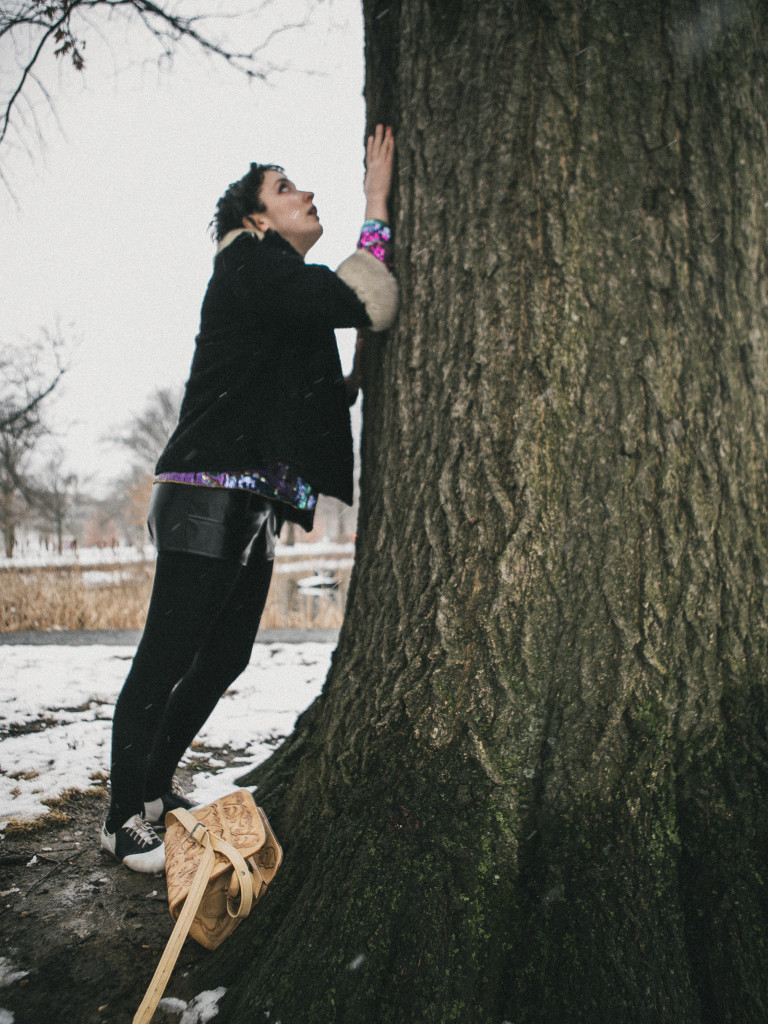
STORY
Trapped at home with a relentless nightmare and a monster clawing its way out of their subconscious, struggling filmmaker Lalla Grotowski must create their way out—or be consumed by the horrors of their own mind. This is a midlength film with a running time of 53 minutes.
Official Selection
Santa Fe International Film Festival
New York Independent Film Festival (nominated Best Screenplay)
Blow Up Art House Film Festival (Semi-finalist)
Philadelphia Independent Film Festival
Philadelphia Latino Film Festival
NOTES FROM JOY
Writing
I’m a fan of “process” films, like 8 1/2 or Adaptation. For me, the muse is an essential component to the artistic process. It’s so mysterious to me how artists conceive of ideas. There is an ongoing silent conversation that happens between the muse and the artist. This film is my attempt to dramatize this silent struggle. At the core of this drama are the two worlds of the artist, the conscious world where Lalla is making the film and the subconscious where their muse lives and is acting out.
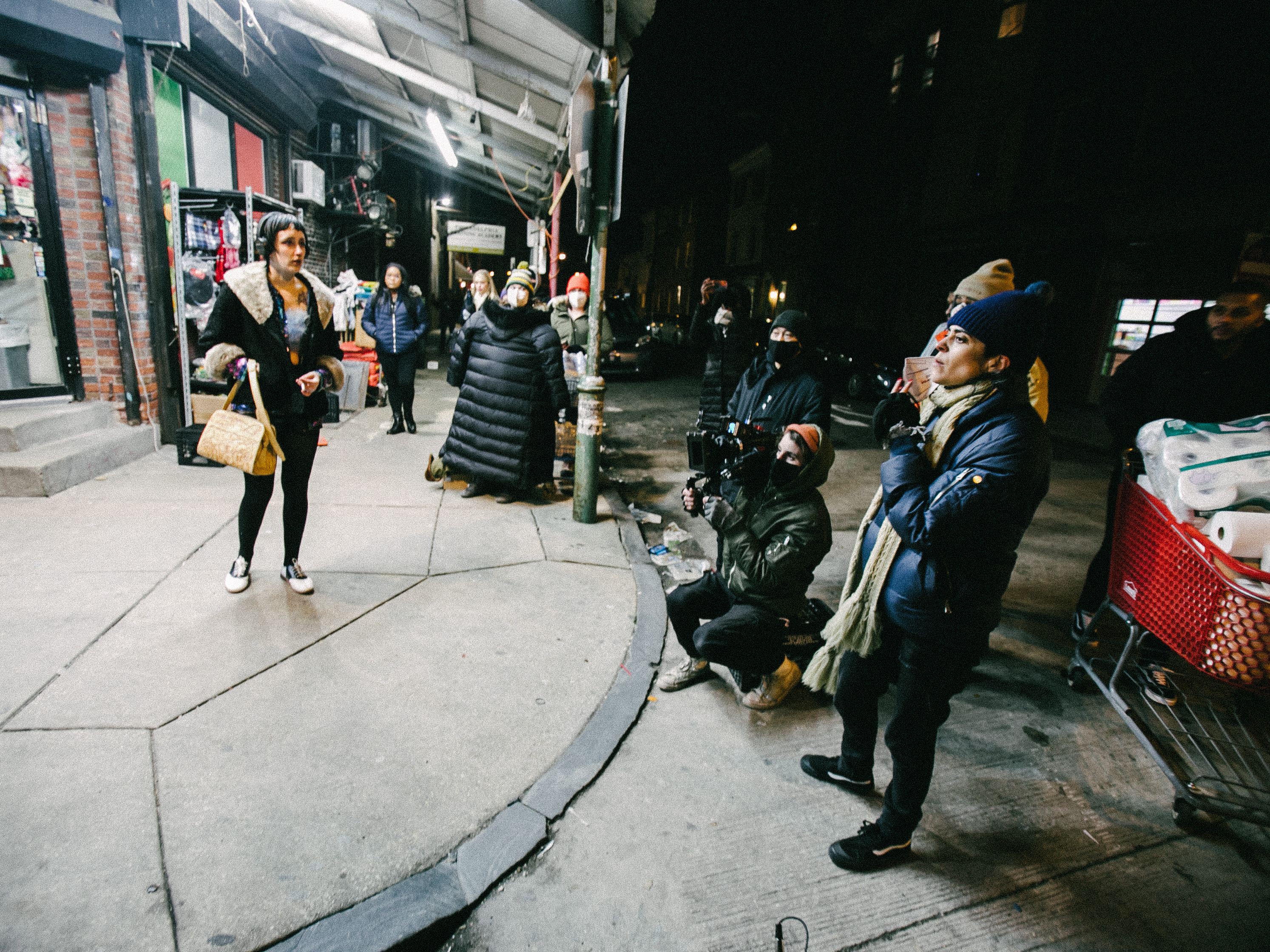 There are two worlds in the story. In the real world, Lalla battles with their ego to write, direct, and edit the film on their own. While they are creating, the muse haunts them and pushes them forward. All of these scenes are handheld, 1.33, color, primarily shot with a 35mm spherical lens, and are influenced by Poetic Realism.
There are two worlds in the story. In the real world, Lalla battles with their ego to write, direct, and edit the film on their own. While they are creating, the muse haunts them and pushes them forward. All of these scenes are handheld, 1.33, color, primarily shot with a 35mm spherical lens, and are influenced by Poetic Realism.
The subconscious world is where Lalla’s muse lives. The muse, named Ananta, is mysterious, at times scary, but is ultimately a guide and a protector. The character of Ananta is inspired by a God from Hindu mythology. The hooded crown of snakes symbolizes protection. These scenes are static dolly shots, 2.39, black and white, shot with anamorphic lenses, and have a German Expressionism tone.
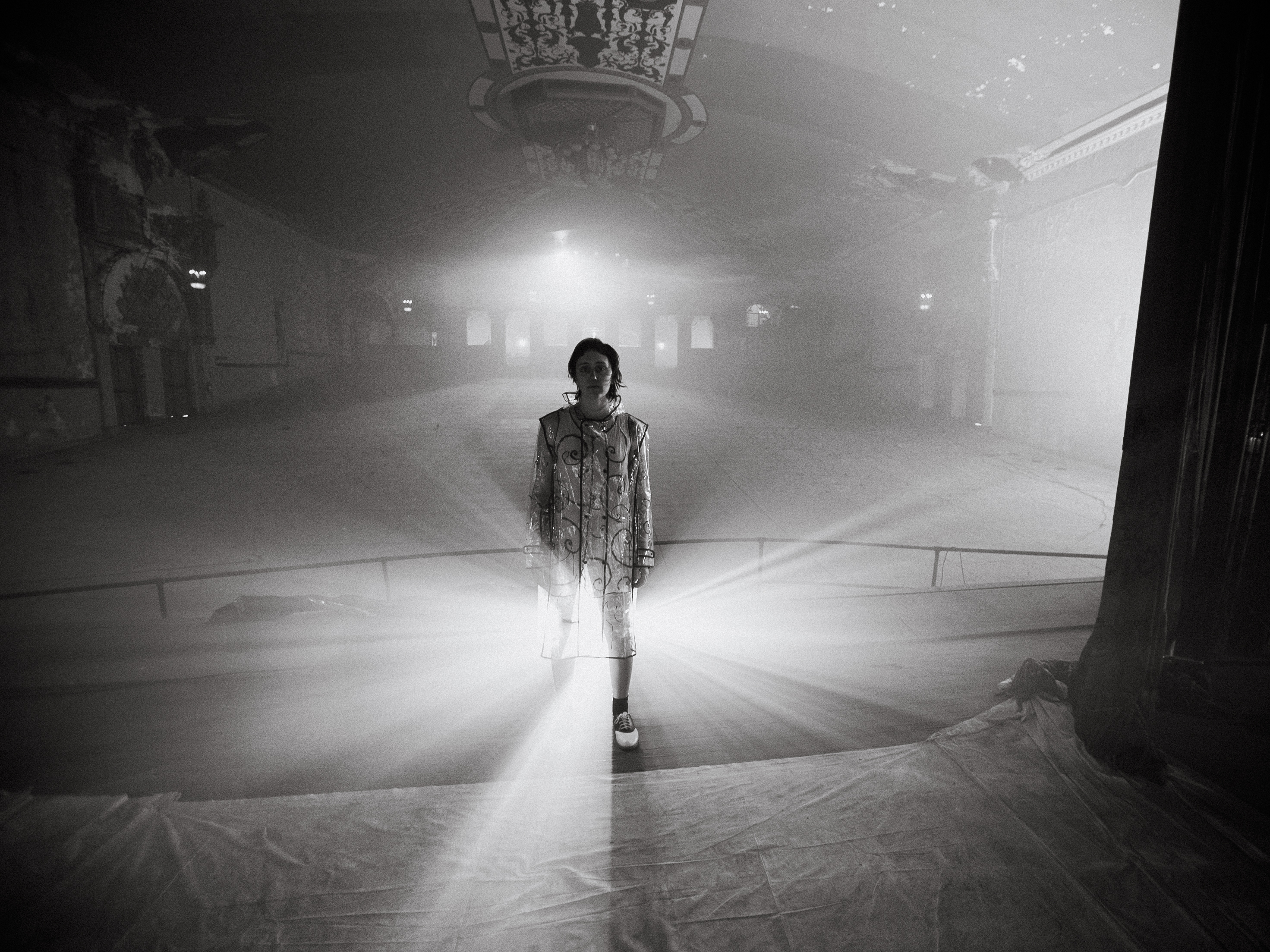 The story blends 3 genres: transcendental, horror, and surrealism. Transcendentalism is revealed in the script writing sequences often through repetition of shots or editing style, horror is revealed in the scenes when Ananta haunts Lalla in their apartment, and surrealism in the black and white unconscious scenes.
The story blends 3 genres: transcendental, horror, and surrealism. Transcendentalism is revealed in the script writing sequences often through repetition of shots or editing style, horror is revealed in the scenes when Ananta haunts Lalla in their apartment, and surrealism in the black and white unconscious scenes.
Lalla is a dreamy character set in a harsh world. The production design, lighting, and costumes all reflect this idea. For example, Lalla’s apartment with its concrete floors and crumbling chipped paint walls, look like it could be in a 3rd world country but the set decoration is covered in photos of master directors and notes about art and filmmaking. The lighting in the apartment is primarily hard light but Lalla’s costumes are very colorful, bright and soft, pushing towards fantasy. The costumes were designed by Brittany Graham.
When the pandemic hit, I immediately knew I wanted to make a film about this wild moment in history. I want my stories to express the world I’m currently living in and experiencing. We went into production during the last major wave. One of my favorite scenes is when Lalla delivers weed at the apartment building and they hear the initial news broadcasts that are coming from around the world. Each country was so off the mark in how they initially responded. Already, only 3 years later, that scene is a historical account of what happened during the first 48 hours when the world shut down.
Shooting
When I'd finished writing the screenplay it was 37 pages long which is a short film length. I scheduled 9 days of shooting but as we shot it became clear that there was a lot more story that I wanted to tell and it wasn't down on the script. I oversimplifed the story in the script. But that is how I like to write. My scripts are generally brief. So I added days and it ended up being 14 shooting days that were pierced together over 6 weeks.
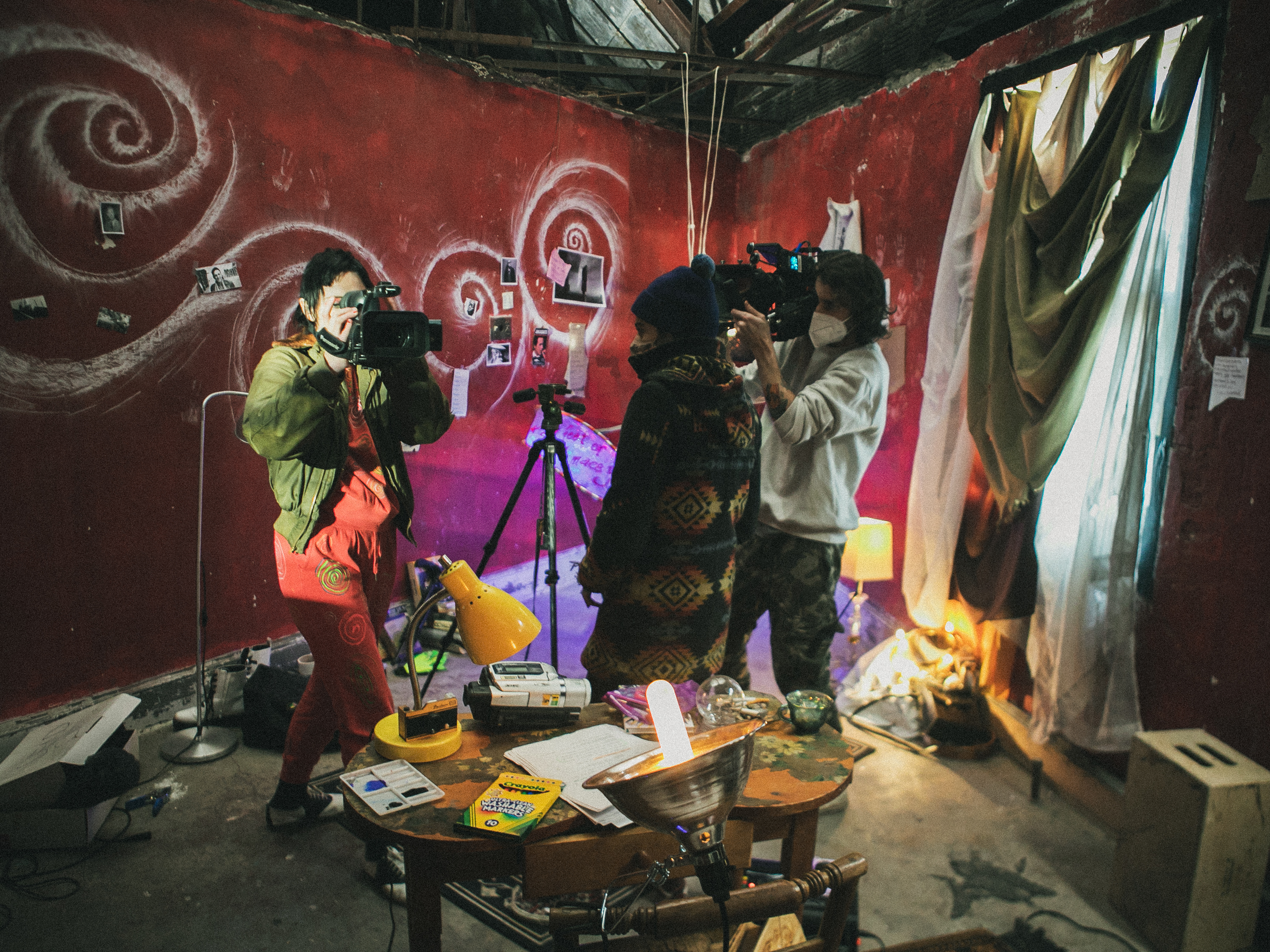 This shoot was pretty much a dream and a love fest. The cast and crew got along and the vibe was perfect for creativity and throwing out ideas. I felt like everyone was there to serve the story and not their egos. It's by far the best producing I've done on a film. I hired well. I believe the only major hiccup was that towards the front half of the shoot we got behind on schedule but all it took was me and Adam Hribar (DoP) tweaking our communication about when we felt we could move on to the next shot and then we were able to move faster.
This shoot was pretty much a dream and a love fest. The cast and crew got along and the vibe was perfect for creativity and throwing out ideas. I felt like everyone was there to serve the story and not their egos. It's by far the best producing I've done on a film. I hired well. I believe the only major hiccup was that towards the front half of the shoot we got behind on schedule but all it took was me and Adam Hribar (DoP) tweaking our communication about when we felt we could move on to the next shot and then we were able to move faster.
The hardest part of the shoot were the scenes in Lalla's bedroom (production design by Jamie Forslund). They just seemed endless. And I'm sure that had something to do with the fact that we were in the same location (their apt) the whole time and so psychologically it just felt like we were never going to see the end of those scenes. Being on a film set definitely feels like you're in a bubble but lalla's apt extended out into another bubble. The other challenge was the cold. I wanted to see the breath. I wanted to feel that Lalla was a dreamy character living in a harsh world and the bitter cold really emphasized the harshness.
Editing
It took me about 6 months to lock picture (order the shots) on the film. I really relied on Lex Benedict (co-editor) to give me the outside perspective of what was and wasn't working. She also did everything else outside of creating the story. Anything technical she managed. She's an amazing helpful editor/producer to have on a team. She's so good at being able to pinpoint what's not working and then coming up solutions.
It took Mitch and I four months to do the sound and music. We had help from Cody Chikowski, engineer maestro. Mitch and I have a very specific way of working on music. He will write all of the instruments he hears for certain moments, record the tracks, and then bring into the studio so we can mix together. He's definitely leading the charge in terms of writing what the music will be but we definitely like to mix the music to the movie. We often use music for sound effects or sound effects as music. And in order to have this type of flexibility you have to write to the film in the moment.
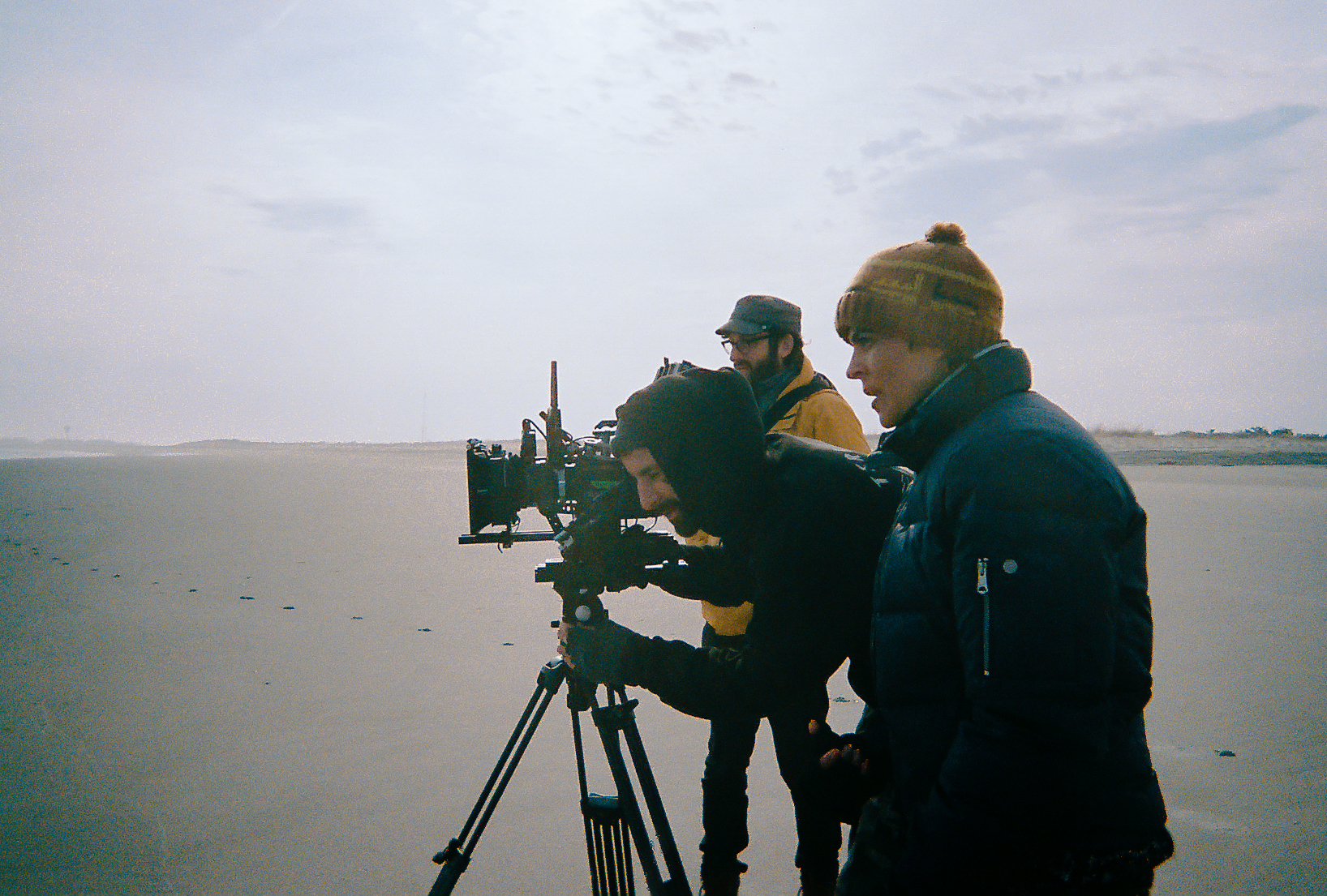 When I shoot I like to do everything as practically as I can, no cgi. I enjoy watching the real experience happen in front of the camera but this was not possible with the snake exterior scenes. We shot in winter and a snake can't be outside during the winter. That meant for all of the interior snake scenes we would have the real snake but then for all of the exterior scenes David Kessler had to create the snake through vfx. David was absolutely amazing to work with on this project. This was my first time working with vfx and I'm extremely happy with the results. This is a photo of David, Adam, and me shooting on the beach.
When I shoot I like to do everything as practically as I can, no cgi. I enjoy watching the real experience happen in front of the camera but this was not possible with the snake exterior scenes. We shot in winter and a snake can't be outside during the winter. That meant for all of the interior snake scenes we would have the real snake but then for all of the exterior scenes David Kessler had to create the snake through vfx. David was absolutely amazing to work with on this project. This was my first time working with vfx and I'm extremely happy with the results. This is a photo of David, Adam, and me shooting on the beach.

